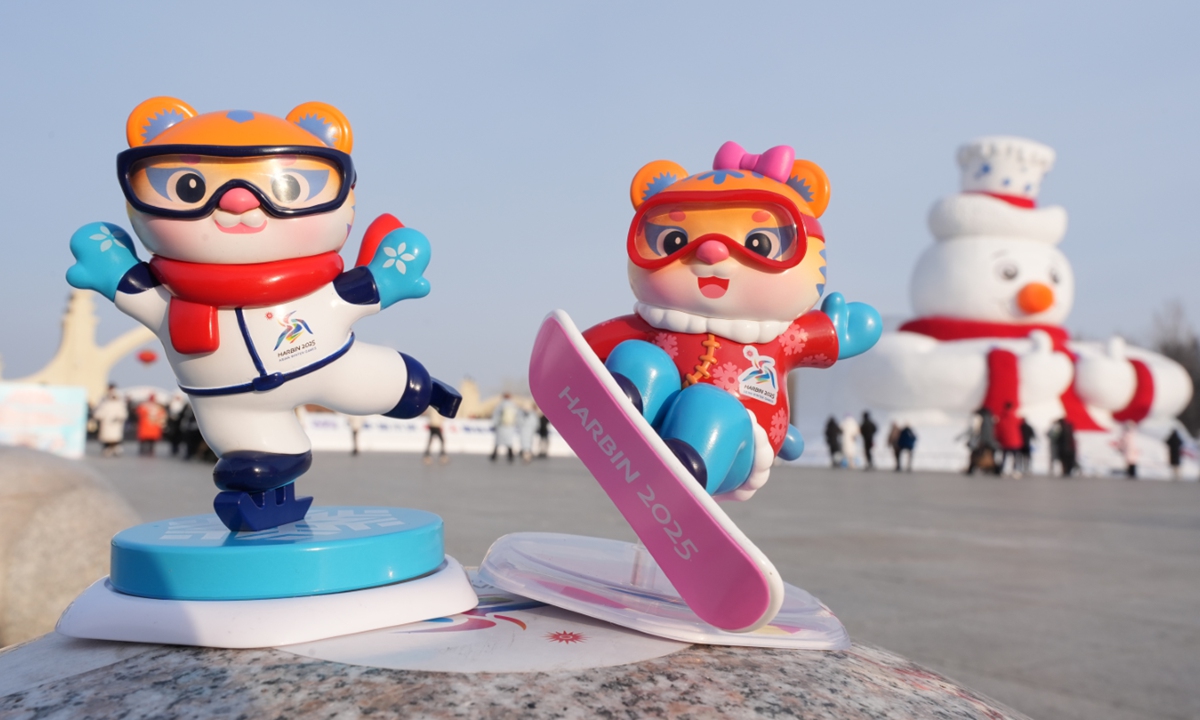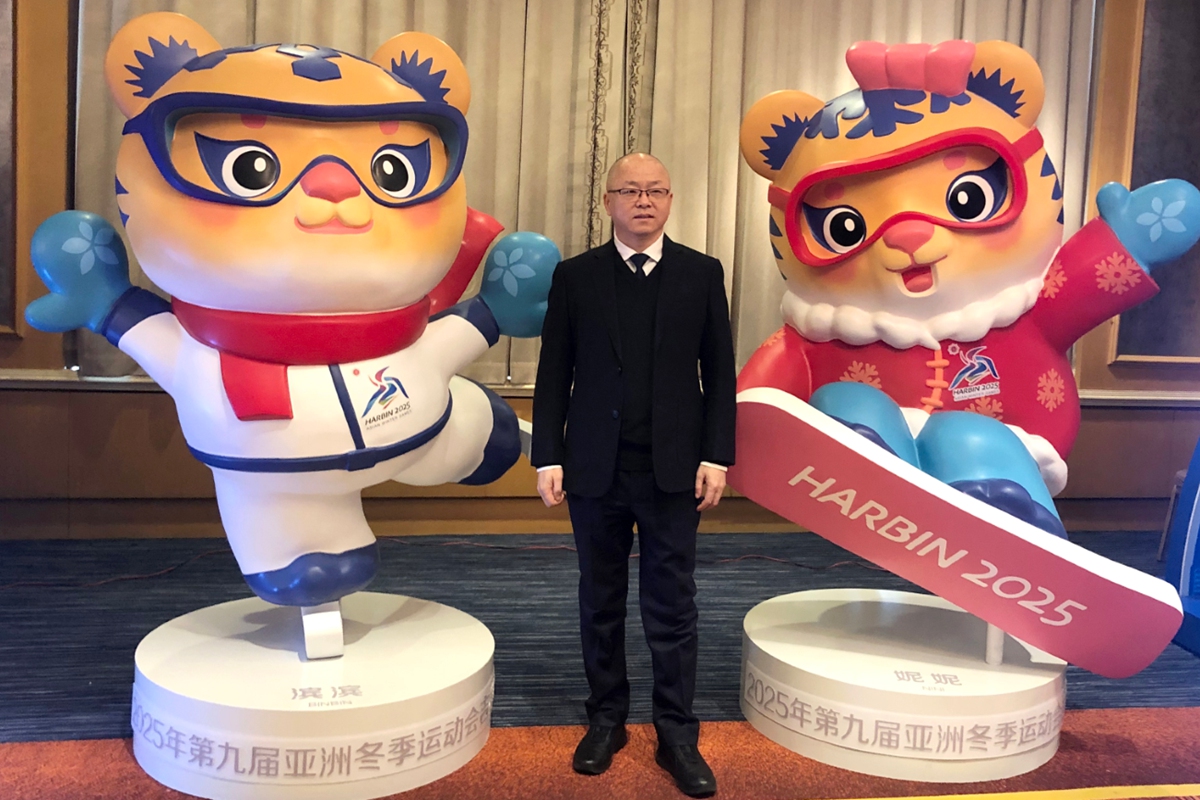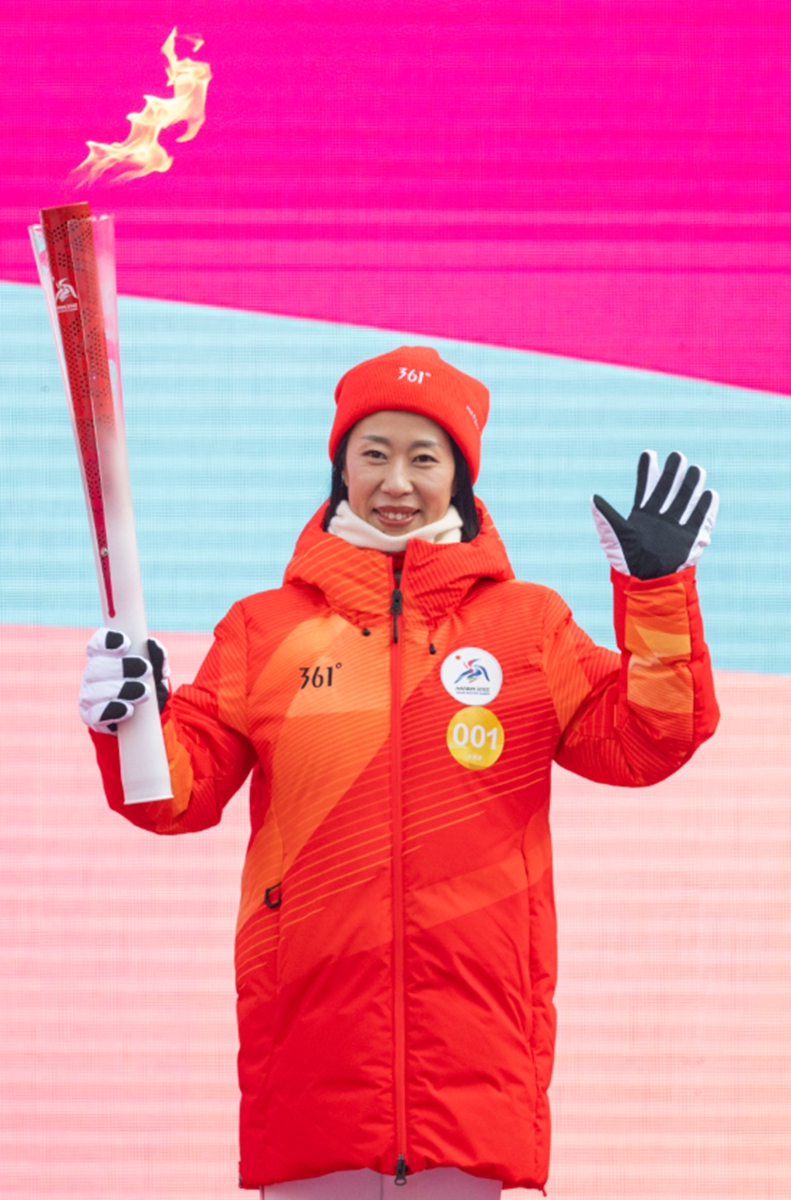环球时报 2025-02-07 09:42:12

The 2025 Asian Winter Games mascots Binbin (left) and Nini, designed by a team led by Chen Lei from the Academy of Arts and Design at Tsinghua University Photo: Courtesy of the organizing committee
As the Asian Winter Games 2025 approaches, elements of the event have been on full display all around the host city Harbin, in Northeast China's Heilongjiang Province.Walking down the streets of Harbin, exquisite ice sculptures line both sides, with images such as the official logo of the Asian Winter Games and scenes of winter sports visible everywhere, drawing passers-by to stop and admire. On Central Street and at Harbin Ice-Snow World, the sculptures of the mascots of the Games, Binbin and Nini, wave to visitors."These cultural symbols of the Asian Winter Games emphasize the event's cultural significance beyond a sports competition. The striking designs not only enhance public recognition but also foster a positive impression of the sporting event, which is crucial to its successful hosting," Ren Hai, a professor at the Olympic Research Center of Beijing Sports University, told the Global Times on Thursday.Like Fuwa, the beloved mascots of the Beijing 2008 Summer Olympics, and Bing Dwen Dwen and Shuey Rhon Rhon, the endearing mascots of the Beijing 2022 Winter Olympics, these symbols that merge artistic creativity with athletic spirit can become an integral part of the event's legacy and prolong its impact long after the Games have concluded, the expert noted.

Chen Lei, head of the mascots and emblem design team for the 9th Asian Winter Games in Harbin, poses for photos with the mascots. Photo: Courtesy of Chen Lei
Blooming in winterA team led by Chen Lei from the Academy of Arts and Design at Tsinghua University was the main force in designing the logo and mascots of the Games this time.Chen, head of the mascots and emblem design team, explained to the Global Times that the emblem, named "Breakthrough," combines Chinese culture with Olympic elements.In his view, the emblem is a "distilled cultural language of a sporting event." To make a small-size emblem represent Harbin's diverse characteristics, the team drew inspiration from multiple visual elements about the host city. They adopted the posture of a short-track speed skater's sprint, complemented by the image of blooming lilacs, the city flowers of Harbin. According to Chen, the interplay of lilacs and light showcases Harbin's ice and romance, while the passionate sprint of the speed skater, combined with the sun icon of the Olympic Council of Asia, embodies the Olympic spirit of "Faster, Higher, Stronger - Together.""It shows China's pursuit of becoming a sporting powerhouse in the new era and its willingness to contribute to the ice and snow sports in Asia," Chen noted.The mascots, Chen told the Global Times, were inspired by two Siberian tiger cubs born in September 2023 at the Heilongjiang Siberian Tiger Park.As one of the most iconic wildlife species of Heilongjiang, which usually symbolizes strength, courage, and vitality, the Siberian tiger aligns closely with the competitive spirit of winter sports, such as speed, power, and resilience, Chen said, adding that the tiger is both formidable and endearing; majestic yet playful. In Northeast Chinese folklore, the tiger is also seen as a symbol of warding off evil and bringing good fortune. "Choosing the Siberian tiger as the mascot not only preserves local cultural traditions but also expresses our well wishes for the smooth success of the event and the athletes' outstanding achievements," Chen remarked.

Former Olympic pairs figure skating champion Shen Xue holds the torch during the 2025 Asian Winter Games Torch Relay in Harbin, Heilongjiang Province, on February 3, 2025. Photo: Courtesy of the organizing committee
Cultural inspirationWhether through the mascots, logo, medals, or torch of the Asian Winter Games, designers drew inspiration from the cultural features and local characters of Harbin.The front of the medals combines the streamlined shape of a racetrack with the emblem of the 9th Asian Winter Games, capturing the powerful and graceful motion of athletes in action. This design embodies the strength and beauty of competitive sports. While the flowing curves of the racetrack incorporate the silhouette of the Harbin Grand Theatre, reflecting the city's unique aesthetic.The reverse side of the medal features a picturesque landscape of Yabuli, with mountain ranges and forests that mirror the terrain of the Greater and Lesser Khingan ranges, creating a vibrant portrayal of Heilongjiang's rich and bountiful landscape. At the center, the emblem of the Olympic Council of Asia is embedded with a rare red Xunke agate gem from Heilongjiang - symbolizing the sun shining brightly over the vibrant land. The ribbon clasp at the top of the medal is inspired by the Sun Gate of the Sun Island Scenic Area, adding a distinctive local character to the design.The overall design of the torch-themed "roaring of breakers" is inspired by the blooming lilac flower. The flame outlet at the top of the torch adopts a hollow petal design in combination with the lilac flower shape, while the external wall of the upper combustion chamber features a hollow snowflake pattern. The external casing is designed as a blooming lilac flower, with a gradient of transparent ice crystal to snow white. The inner core color gradient ranges from Chinese red to lilac purple.When ignited, the torch displays a stunning fusion of ice and fire, symbolizing the sincerity, openness, warmth, and inclusiveness of the host city.During the torch relay in Harbin on Monday, the burning torch complemented the beauty of the city, drawing cheers from audiences.Ren emphasized that the design of these cultural symbols should strike a balance between innovation and tradition, local roots and global appeal, and should avoid being constrained by a single pattern or style."Gaining deeper insights into athletic spirits can greatly enhance the artistic design of major sporting events," the expert stated. He encouraged designers to engage in more conversations with athletes and coaches, and to spend additional time on the race course to draw inspiration.
责编:冯宇轩
一审:冯宇轩
二审:唐煜斯
三审:秦慧英
来源:环球时报
我要问



 下载APP
下载APP 报料
报料 关于
关于
 湘公网安备 43010502000374号
湘公网安备 43010502000374号